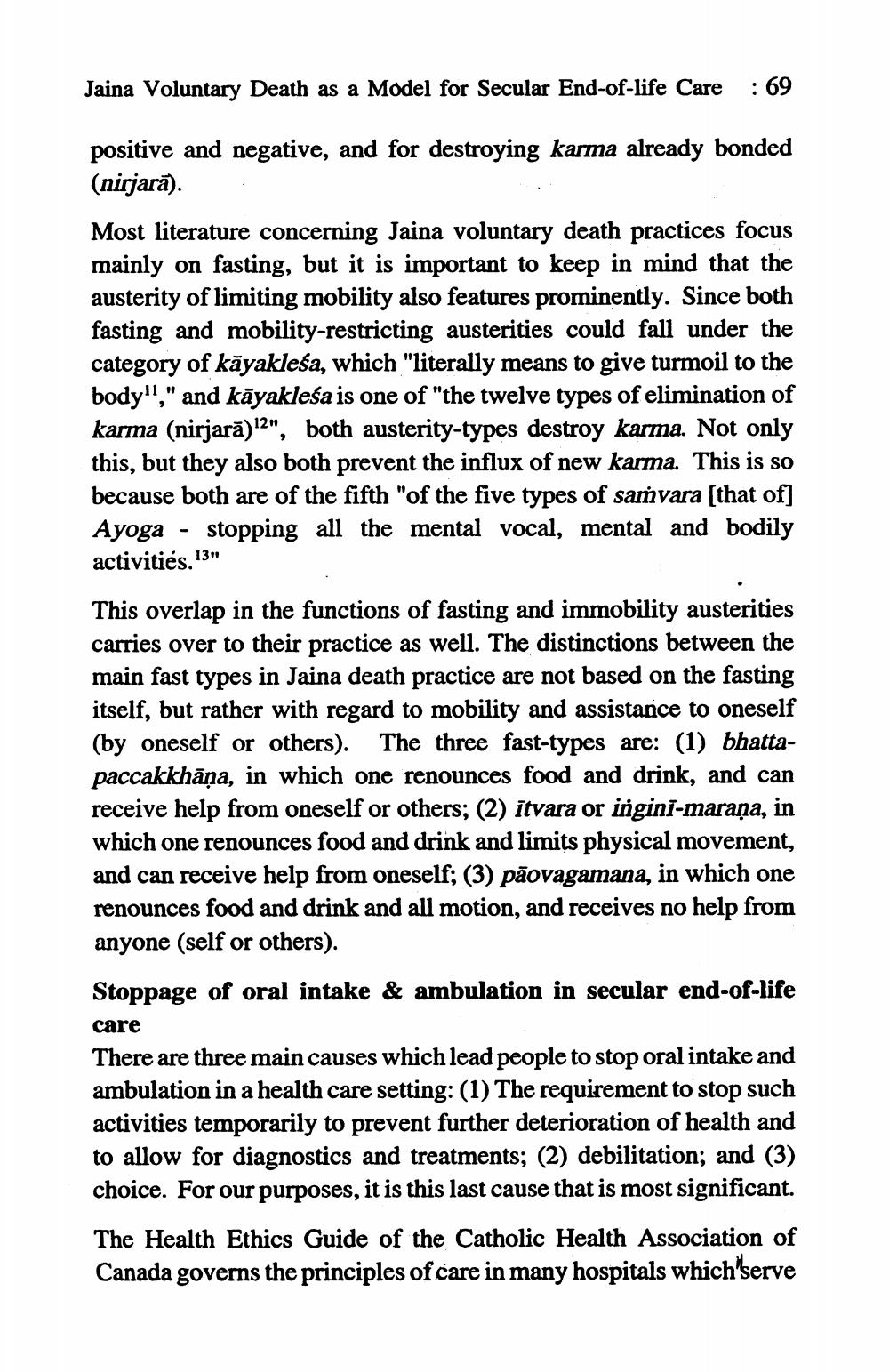________________
Jaina Voluntary Death as a Model for Secular End-of-life Care
: 69
positive and negative, and for destroying karma already bonded (nirjarā). Most literature concerning Jaina voluntary death practices focus mainly on fasting, but it is important to keep in mind that the austerity of limiting mobility also features prominently. Since both fasting and mobility-restricting austerities could fall under the category of kāyakleśa, which "literally means to give turmoil to the body"," and kāyakleśa is one of "the twelve types of elimination of karma (nirjarā)12", both austerity-types destroy karma. Not only this, but they also both prevent the influx of new karma. This is so because both are of the fifth "of the five types of samvara (that of] Ayoga - stopping all the mental vocal, mental and bodily activities. 13" This overlap in the functions of fasting and immobility austerities carries over to their practice as well. The distinctions between the main fast types in Jaina death practice are not based on the fasting itself, but rather with regard to mobility and assistance to oneself (by oneself or others). The three fast-types are: (1) bhattapaccakkhāņa, in which one renounces food and drink, and can receive help from oneself or others; (2) ītvara or irgini-maraṇa, in which one renounces food and drink and limits physical movement, and can receive help from oneself; (3) pāovagamana, in which one renounces food and drink and all motion, and receives no help from anyone (self or others). Stoppage of oral intake & ambulation in secular end-of-life care There are three main causes which lead people to stop oral intake and ambulation in a health care setting: (1) The requirement to stop such activities temporarily to prevent further deterioration of health and to allow for diagnostics and treatments; (2) debilitation; and (3) choice. For our purposes, it is this last cause that is most significant. The Health Ethics Guide of the Catholic Health Association of Canada governs the principles of care in many hospitals which serve




